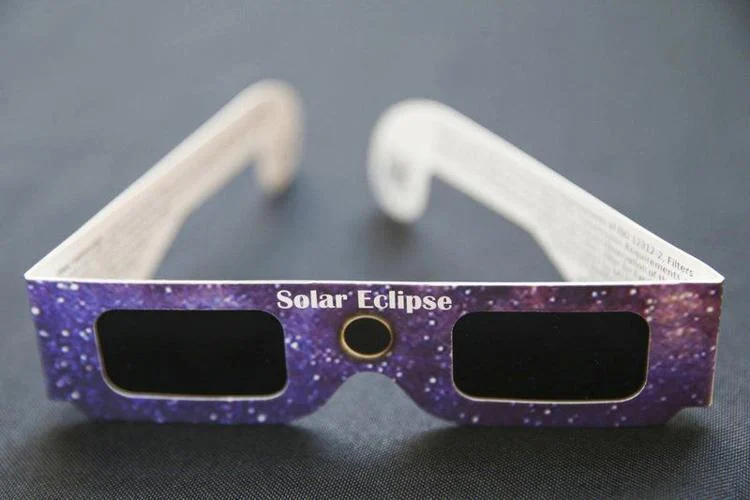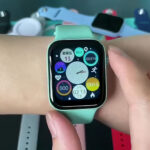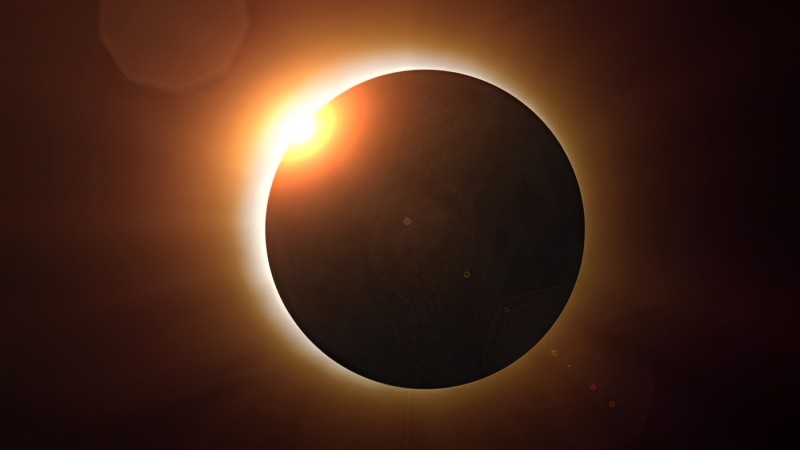A solar eclipse refers to the celestial event wherein the moon blocks the sun, resulting in a temporary darkening of the sky. This phenomenon occurs when the moon passes between the sun and the Earth, casting a shadow on our planet. Solar eclipses offer a captivating natural spectacle that elicits awe and curiosity among observers worldwide.
- The solar eclipse is one of the most breathtaking occurrences on the cosmic calendar. The universe has a way of capturing our imagination. It’s an amazing and uncommon sight to see the moon move in front of the sun and momentarily throw a shadow on Earth. But be cautious when watching a solar eclipse, as gazing at the sun directly might result in irreversible eye damage. This tutorial will discuss safe ways to witness this heavenly show.
Solar Viewing Glasses:
Sun viewing glasses are the safest way to observe a solar eclipse. The solar filter in these specifically made glasses lowers the brightness of the sun to a safe level for direct sight. To ensure that your glasses provide sufficient eye protection, make sure they adhere to international safety standards (ISO 12312-2).
Pinhole Projector: Solar eclipse

A pinhole projector is a secure substitute for glasses for people who would rather not wear them. This easy-to-use gadget allows indirect viewing by projecting a picture of the eclipse onto a surface. A cardboard box or paper plate are two typical home objects that may be used to simply build a pinhole projector.
1: Make a tiny, round hole in a single piece of material.
2: Allow sunlight to enter the hole and project onto a level surface while facing the sun.
3: The projected image of the eclipse is shown on a second piece of cloth that serves as a screen.
Solar Filters for Telescopes and Binoculars:
Never look at the sun using binoculars or a telescope without the appropriate solar filters. Sunglasses and standard filters alone won’t adequately shield your eyes. Securely fasten sun filters made especially for these gadgets to guarantee secure viewing.
Use Welder’s Glass:
It is possible to watch a solar eclipse with welder’s glass that has a shade of 14 or higher. Before using, though, make sure the glass is free of fractures and other damage. Welder’s glass allows for direct viewing of the sun since it gives a darker perspective of it.
FAQs:
What is a solar eclipse?
A solar eclipse occurs when the moon passes between the Earth and the Sun, blocking all or part of the Sun’s light, resulting in a temporary darkening of the Earth’s surface.
How does a solar eclipse happen?
A solar eclipse occurs when the orbits of the Earth and the Moon align in such a way that the Moon casts a shadow on the Earth’s surface, blocking the sunlight.
What are the different types of solar eclipses?
There are three main types of solar eclipses: total, partial, and annular. A total solar eclipse happens when the Moon completely covers the Sun. A partial solar eclipse occurs when only a part of the Sun is covered, and an annular solar eclipse takes place when the Moon covers the center of the Sun, leaving a ring-like appearance around the edges.
How often do solar eclipses occur?
Solar eclipses are relatively rare events. On average, there are about two to five solar eclipses per year, but any given location on Earth will experience a solar eclipse approximately once every 18 months.
Why don’t we have a solar eclipse every month during the new moon phase?
Solar eclipses do not occur every month because the Moon’s orbit is inclined relative to the Earth’s orbit around the Sun. The alignment necessary for an eclipse to happen only occurs when the Moon is near the nodes of its orbit.
What safety precautions should I take to observe a solar eclipse?
It is crucial to use proper eye protection when observing a solar eclipse. Regular sunglasses are not sufficient. Specialized solar viewing glasses or solar filters for telescopes/binoculars must be used to protect your eyes from harmful solar radiation.
Can I view a solar eclipse with the naked eye?
Directly looking at the Sun during any phase of a solar eclipse can cause serious eye damage or blindness. Always use approved solar viewing glasses or solar filters for telescopes/binoculars to safely observe a solar eclipse.
Where is the best place to observe a solar eclipse?
The visibility of a solar eclipse depends on your geographic location. The best places to observe a particular eclipse are along the path of totality, where the Sun is completely covered by the Moon. However, partial eclipses can be visible from a broader range of locations.
How long does a solar eclipse last?
The duration of a solar eclipse varies depending on the type and specific circumstances. A total solar eclipse can last a few minutes, while partial and annular eclipses may extend over a longer period.
Why are solar eclipses significant?
Solar eclipses are significant astronomical events that captivate people’s interest worldwide. They provide scientists with opportunities to study the Sun’s outer atmosphere, called the corona, and offer a unique celestial spectacle for observers. Additionally, solar eclipses have cultural and historical importance, with various civilizations attributing diverse meanings to these celestial occurrences.
When is the next solar eclipse?
The timing and visibility of solar eclipses vary. You can check astronomical calendars, websites, or use specialized apps to find information on upcoming solar eclipses based on your location.
Can a solar eclipse occur during a full moon?
No, a solar eclipse cannot occur during a full moon. Solar eclipses happen during the new moon phase when the Moon is positioned between the Earth and the Sun.
What is the difference between a solar and lunar eclipse?
A solar eclipse occurs when the Moon blocks the Sun’s light, while a lunar eclipse occurs when the Earth passes between the Sun and the Moon, casting a shadow on the lunar surface.
Can animals react to a solar eclipse?
Some animals may exhibit changes in behavior during a solar eclipse, acting as if it were dusk. Birds may return to their nests, and other animals may become more active or vocal. These behaviors are observed more commonly in areas experiencing a total solar eclipse.
Are solar eclipses visible from other planets?
Yes, solar eclipses can be observed on other planets in our solar system if they have moons that pass between them and the Sun. However, the specific details and visibility depend on the planetary configurations of each celestial body.









